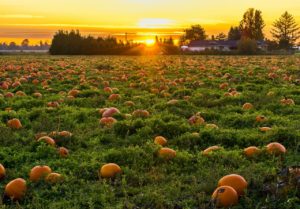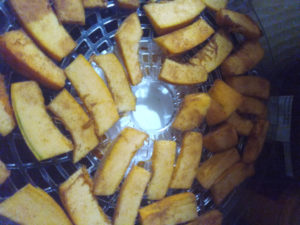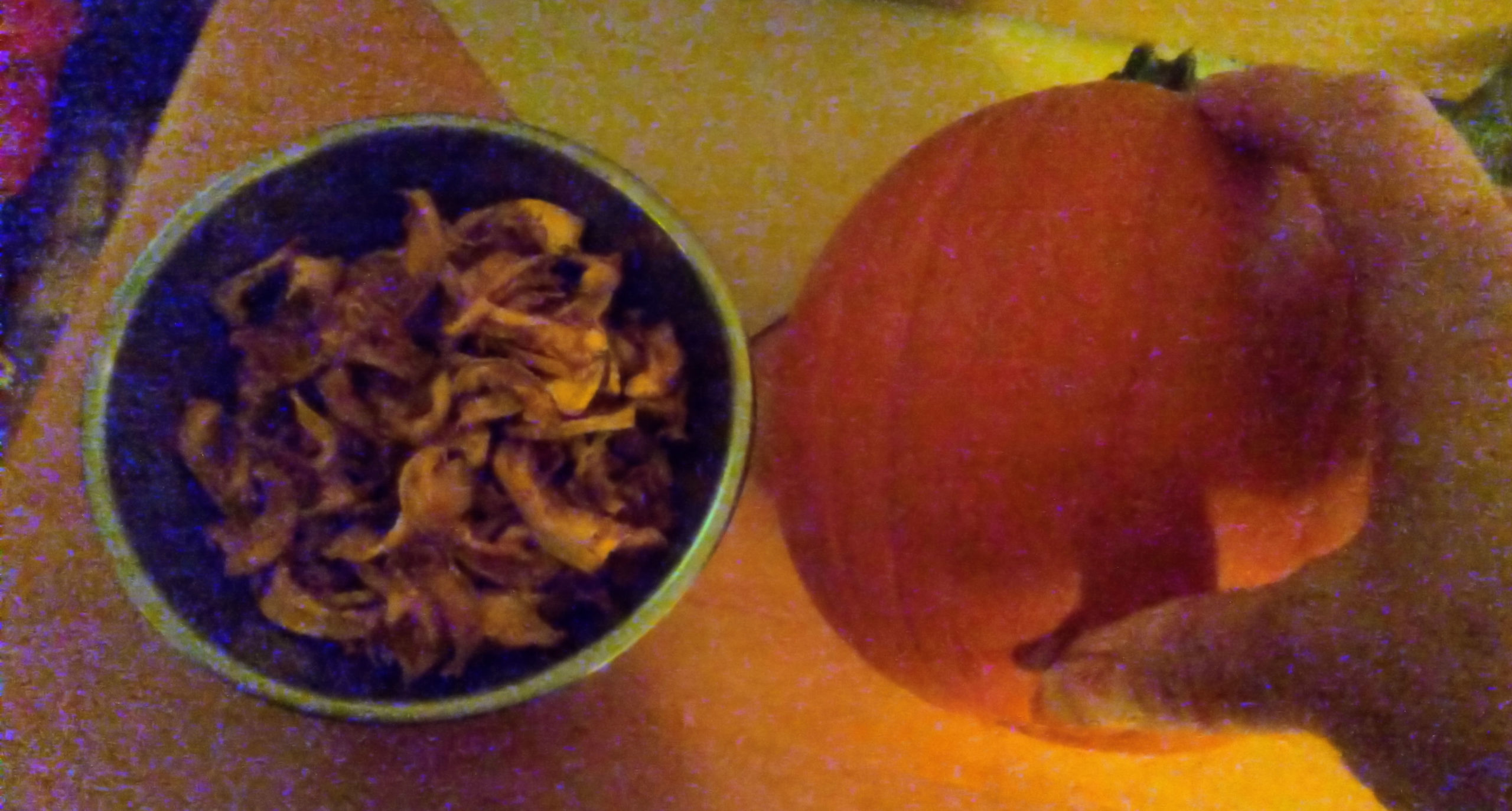Halloween is over. Now what to do with all those pumpkins?
Most people think of using pumpkin for desserts like pumpkin pie. Some people will carve a pumpkin for Halloween and then purchase canned pumpkin puree to make pumpkin pie after having tossed out the Halloween pumpkin. They are available in abundance at this time of year. With a little bit of effort you can have pumpkin when ever you want without spending 3 or 4 bucks a can to get puree.
What Are Pumpkins?
Pumpkin is part of the winter squash family and one of the oldest domesticated plants. They are native to North America, well the round orange kind. Pumpkin fragments found in Mexico date it’s use to as early as 7,000BC.
Winter squash is a collective name for several types of squash which mature in the fall. They usually have a tougher rind than summer squash and will last longer over the winter. It usually requires cooking and the skins are not eaten.
The word ‘pumpkin’ finds it’s origin from an Ancient Greek word that was then romanized to pepon meaning ‘melon’. Like many words, it evolved through the years and when 17th century colonists encountered pumpkins upon their arrival in the northeastern United States, it became ‘pumpkin’. The Wampanog people used the word ‘pohpukun’ when introducing them to the English.
Pumpkins are now grown around the world. The popularity of Halloween drives a lot of the sales followed by their use for food. An acre of pumpkins for Halloween can produce 2,500 to 3,000 pumpkins. An acre of the smaller pie pumpkins will yield more in the area of 5,000 pumpkins.

The Canadian record for the largest pumpkin was set in Ontario where the beast weighed in at 1,959lbs / 888.5kg. I think that one might be a bit much for me to dehydrate.
Dehydrating Pumpkin
Yes, this is where I’m going with this pumpkin talk. I’m not real big on using pureed pumpkin but I do enjoy pumpkin. I’ll add it to soups and stews in the winter time for a different sort of flavour. Dehydrated pumpkin can be ground into powder and added to many dishes.
When the pumpkin harvest takes place in the fall, they can often be found on special. When they came on this year, I made sure to get several and then put my dehydrator to work.
Cutting into the pumpkin is the toughest part but once it’s cut, a regular potato peeler will remove the skin. Don’t toss the seeds out, they can be roasted for a treat, added to baking or even ground up. Yes, not much avoids being ground when I have a dehydrator and a coffee grinder.
I’ve been making a rustic bread recipe. It calls for 2 cups of flour. I reduce that to 1.5 cups and then substitute in other powders, like pumpkin or pumpkin seeds, to give me variety on the type of bread I’m eating. When I add pumpkin, I also add a generous dash of pumpkin pie spice.
So, the pumpkin’s been cut into sections and peeled. The seeds and the stringy mass they are attached to has been set aside to deal with. Now I slice the pumpkin into thin slices and arrange them on the dehydrator trays. About 9 hours at 160F was enough to dry them. One thing that did surprise me was the amount the pieces shrunk, indicating a high level of moisture to start with.

The seeds and that stringy mass. I found the easiest way to deal with them was to rinse and drain them before spreading them onto a dehydrator tray. I used a teflon insert on the tray to avoid any of the seeds or the ‘mass’ breaking off and falling through the tray.
Once dried, the mass will break apart when worked with your fingers leaving the seeds free. I tried just putting them onto the tray without the rinse but found they took forever to dry.
The dried mass can now be used as a powder. This means the only waste from the pumpkins was the skin. Everything else was used.
Nutritionally, both pumpkin and the seeds are healthy foods.
The benefits of pumpkin include:
- rich in Vitamin A
- Beta-carotene and alpha-carotene provide antioxidants helping to guard against diseases like cancer and eye diseases
- In addition to vitamin A, there’s also vitamin C & E, iron and folate helping to boost the immune system.
- Lutein & zeaxanthin in pumpkin is linked to lower risks of age-related macular degeneration
- Nutrient dense food meaning it has lower calories while delivering more nutrients
- Good source of fiber and potassium
Stay away from the sugar laden pumpkin treats and consume the real deal for your health.
The health benefit of the seeds include:
- High in magnesium, manganese, iron, zinc and copper — all of them make important health contributions. Just a single ounce serving of them can provide up to 42% of the recommended daily intake.
- High in antioxidants
- Contain several beneficial fats like Omega-3 and ALA
- Good source of plant protein which helps to control blood sugar
- Contains anti-fungal and anti-viral properties which help strengthen the immune system
Shells or No Shells?
The pumpkin seeds I extracted are in the shell. If you were to purchase pumpkin seeds at the store, they will likely be shelled. They can be eaten both ways. The shells are a source of fiber but not everyone likes the taste even after roasting.
Try them and see which you prefer. If you rather then shelled, you can do so individually like sunflower seeds or you can try running a rolling pin over them to break up the shells after roasting. Me, I’m thinking a lot can be hidden in powder added to my bread. Then I get all the fiber.
Sources:
Field of Pumpkins image — Pexels.com
All other images belong to me.
https://en.wikipedia.org/wiki/Pumpkin
http://www.omafra.gov.on.ca/english/crops/facts/00-031.htm#yield
https://www.healthline.com/nutrition/pumpkin#TOC_TITLE_HDR_12







